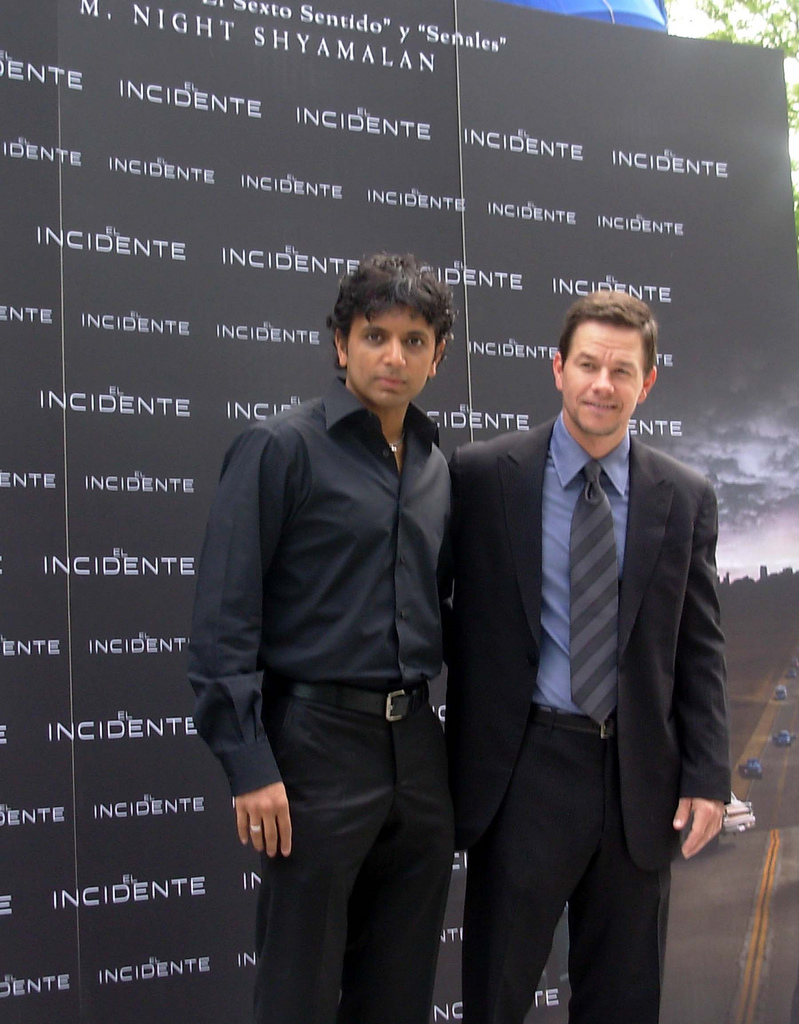
M. Night Shyamalan has long held a unique position in the landscape of modern cinema, known for crafting suspenseful narratives that often culminate in unexpected, thought-provoking twists. With his 2021 thriller, ‘Old,’ he once again invited audiences into a world where the ordinary becomes terrifyingly extraordinary, challenging perceptions of time, mortality, and the very fabric of existence. This film, a bold adaptation of a critically acclaimed graphic novel, delivers a relentless and mean chiller that plunges its characters, and by extension, its viewers, into an allegorical existential meditation on getting older.
‘Old’ distinguishes itself not just through its startling premise but also through its meticulous execution and the sheer audacity of its production, especially given the unprecedented global circumstances under which it was brought to life. From its origins as a cherished gift to its journey through a pandemic-stricken world, the film is a testament to Shyamalan’s singular vision and his commitment to delivering original stories that resonate deeply. It’s a cinematic experience that forces us to confront our own relationship with time, making us question how we navigate its passage and what truly matters when every moment is amplified.
Today, we embark on an in-depth exploration of this unique cinematic endeavor, dissecting the myriad elements that coalesce to form M. Night Shyamalan’s ‘Old.’ We’ll delve into its fascinating genesis, the creative forces that shaped its narrative, the ensemble of talent that brought its characters to life, and the chilling mechanisms of its central horror. Join us as we uncover how ‘Old’ redefines our understanding of cinematic storytelling, cementing its place as a truly unforgettable entry in the thriller genre.

1. **The Graphic Novel Origin: From ‘Sandcastle’ to Screen**The genesis of ‘Old’ is as intriguing as the film itself, stemming from a deeply personal gift that sparked M. Night Shyamalan’s imagination. The film is directly based on the French-language Swiss graphic novel ‘Sandcastle’ by Pierre Oscar Lévy and Frederik Peeters. This highly acclaimed work, known for its unsettling premise and existential dread, landed in Shyamalan’s hands as a Father’s Day gift in 2017, presented to him collectively by his three daughters.
The director, known for his original screenplays, was so captivated by the graphic novel’s concept that he decided to adapt it into a film. This choice highlights Shyamalan’s discerning eye for stories that can translate into potent, thought-provoking cinematic experiences. ‘Sandcastle’ provided a fertile ground for his signature style, offering a core idea that could be expanded upon while maintaining its chilling essence, even if the film would eventually diverge in its resolution.
His decision to bring ‘Sandcastle’ to the big screen was a testament to the graphic novel’s power, demonstrating how a compelling visual narrative, even without an explicit explanation for its central mystery, could inspire a feature film. The adaptation process allowed Shyamalan to infuse his own thematic concerns, particularly regarding time and family, into the existing framework, creating a work that is both faithful to its source material’s spirit and distinctly his own directorial vision.
Read more about: The Time-Warping Truth: 14 Wild Facts About M. Night Shyamalan’s Thriller ‘Old’ That Left Us Absolutely Stunned!
2. **M. Night Shyamalan’s Unique Vision and Adaptation Process**M. Night Shyamalan’s involvement in ‘Old’ was not just as a director but also as the sole screenwriter and a producer, emphasizing his deep creative control over the project. In September 2019, Universal Pictures announced its partnership with Shyamalan for two independently financed thriller films, with ‘Old’ being one of them. Universal Pictures President Peter Cramer lauded these projects for their “highly original stories,” a sentiment echoed by Shyamalan himself, who stressed the importance of original films to the longevity of the theatrical experience.
Shyamalan’s approach to filmmaking is renowned for its precision, and ‘Old’ was no exception. He is known for meticulously storyboarding every shot, a method that cast members recalled. His daughter, Ishana Shyamalan, described her father’s choice as a “very prescribed and programmatic” approach. This systematic method allowed him to maintain tight control over the visual narrative, ensuring that every frame contributed to the claustrophobic and disorienting atmosphere of the film.
This visionary control extended to the performances as well. Actor Alex Wolff noted Shyamalan’s remarkable ability to guide actors. Wolff explained that the director “had such precision in terms of what age he wanted you to be and where he wanted you to be at that age. Night would just guide you where you needed to be emotionally, and then it would happen naturally.” This detailed guidance enabled the actors to embody the rapid transformations their characters underwent, making the accelerated aging feel authentic and emotionally impactful.
Read more about: 12 Unbelievable Secrets and Shocks from M. Night Shyamalan’s ‘Old’ That Will Seriously Mess With Your Head!
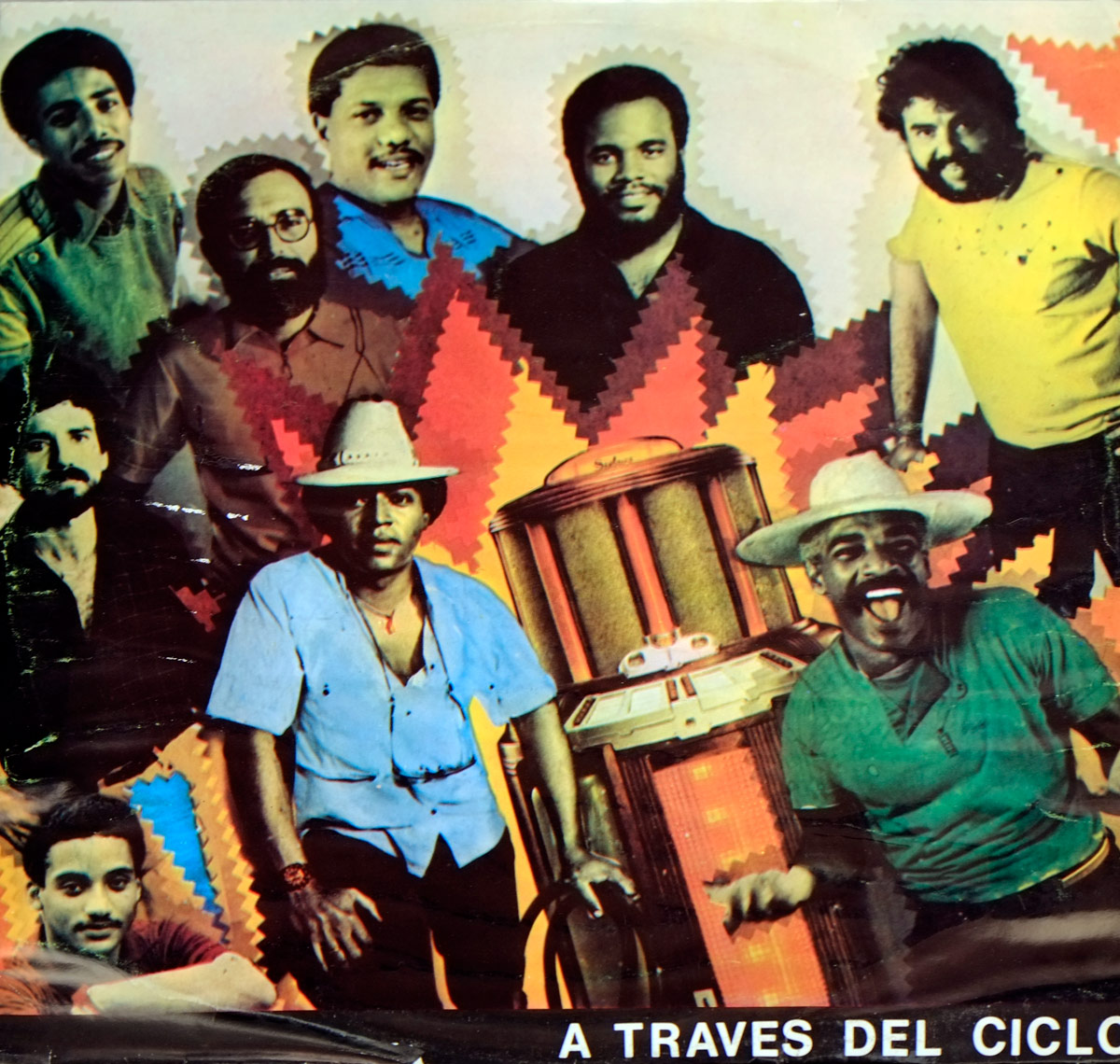
3. **The Star-Studded Ensemble Cast and Their Pivotal Roles**’Old’ boasts an impressive ensemble cast, each actor crucial in portraying the escalating horror and emotional turmoil brought on by the beach’s mysterious properties. Leading the group are Gael García Bernal as Guy Cappa, an actuary, and Vicky Krieps as Prisca Cappa, a museum curator and Guy’s wife, who is grappling with an ovarian tumor. Their performances anchor the family drama at the heart of the story, as they navigate their own marital separation amidst the unprecedented crisis.
Supporting them is a diverse array of talent bringing distinct characters to life. Rufus Sewell plays Charles, a schizophrenic cardiac surgeon, married to Abbey Lee’s character, Chrystal, a trophy wife with hypocalcemia. Alex Wolff and Thomasin McKenzie portray the teenage versions of Guy and Prisca’s children, Trent and Maddox Cappa, respectively. The film also features younger and adult versions of Trent and Maddox, played by Emun Elliott (adult Trent), Luca Faustino Rodriguez (Trent age 11), Nolan River (Trent age 6), Embeth Davidtz (adult Maddox), and Alexa Swinton (Maddox age 11), showcasing the rapid aging effect.
Further enriching the cast are Nikki Amuka-Bird as Patricia Carmichael, an epileptic psychologist, and Ken Leung as Jarin Carmichael, a nurse and Patricia’s husband. Eliza Scanlen appears as Kara, Charles and Chrystal’s daughter, with Mikaya Fisher and Kylie Begley playing younger versions. Aaron Pierre rounds out the main group as Brendan, a rapper with hemophilia, known as “Mid-Sized Sedan.” The film also includes Kathleen Chalfant as Agnes, Charles’ mother, and Gustaf Hammarsten as the resort manager who orchestrates the sinister trials, along with appearances by Francesca Eastwood, Matthew Shear, Kailen Jude, Daniel Ison, and M. Night Shyamalan himself in a cameo role.
Notably, Bryan Cranston had reportedly declined a role in the film due to a scheduling conflict, which speaks to the caliber of talent Shyamalan sought for this ambitious project. The depth and variety of the cast allowed for a broad spectrum of human reactions to the unimaginable circumstances, highlighting individual struggles and collective despair as their lives are condensed into a single, terrifying day.
Read more about: Brad Pitt’s Epic Journey: 8 Defining ‘Vehicles’ That Drive His Discerning Style
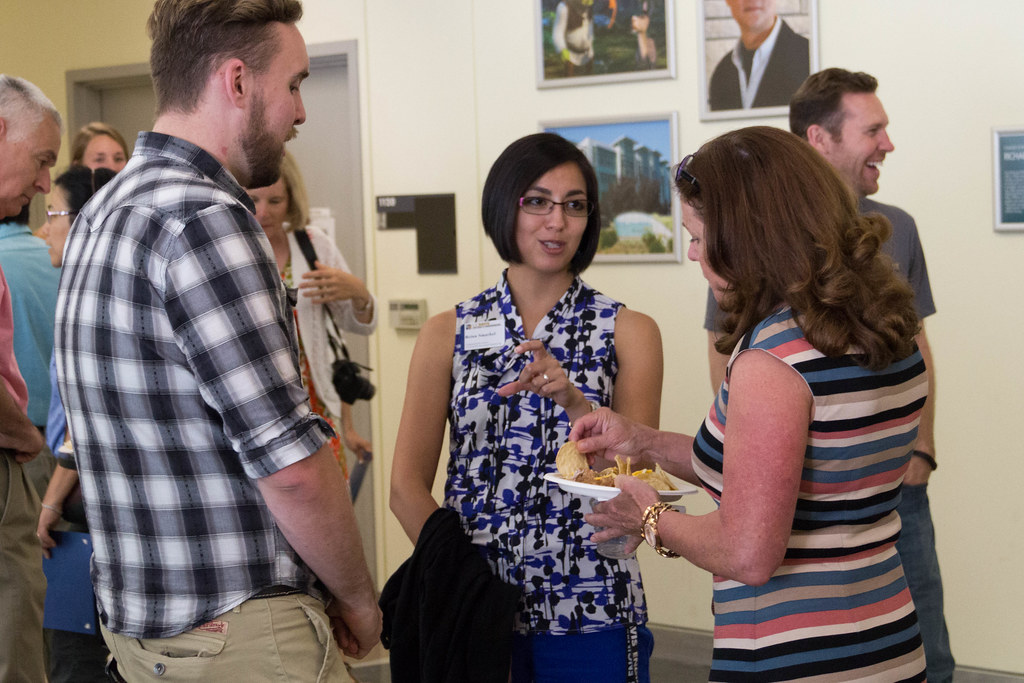
4. **The Core Terrifying Premise: Rapid Aging on a Secluded Beach**The central premise of ‘Old’ is both simple and profoundly unsettling: a secluded beach that causes its occupants to age at an alarming rate. The story begins with the Cappa family—Guy, Prisca, and their young children Maddox and Trent—on what is meant to be a final family vacation at a tropical resort before their separation. Lured to a supposedly idyllic, private beach by the resort manager, they soon discover they are not alone, encountering other families, including rapper Brendan, surgeon Charles’s family, and the Carmichaels.
The horror truly sets in with the discovery of Brendan’s companion’s corpse and the inexplicable rapid maturation of the children. What starts as a subtle change quickly escalates, leading the characters to the terrifying realization that the beach is aging them at an equivalent of one year every 30 minutes. This revelation shatters any sense of normalcy or safety, trapping them in a horrifying race against time where every passing moment brings them closer to the inevitable.
The isolation of the beach intensifies the terror; attempts to leave result in blackouts and immediate reawakening back at their starting point, effectively imprisoning them. This ingenious concept creates a unique form of psychological and physical horror, forcing the characters to confront their mortality not in the distant future, but in a matter of hours. The beach becomes a crucible where lives are accelerated, and the fragile nature of human existence is laid bare in the most brutal fashion imaginable.
Read more about: The Time-Warping Truth: 14 Wild Facts About M. Night Shyamalan’s Thriller ‘Old’ That Left Us Absolutely Stunned!
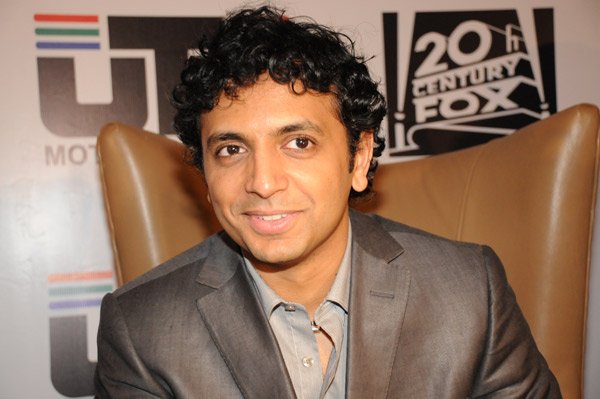
5. **Medical Conditions Under the Microscope of Accelerated Time**One of the most compelling and horrifying aspects of ‘Old’ is how it weaponizes pre-existing medical conditions by accelerating their progression. Each family brought to the beach has at least one member with an underlying medical issue, which, under the beach’s influence, rapidly develops at a life-threatening pace. This serves as a critical plot device, intensifying the characters’ struggles and highlighting the sinister purpose behind their entrapment.
Prisca Cappa, for instance, has a benign slow-growing ovarian tumor. On the beach, this tumor rapidly grows to a life-threatening size, necessitating an emergency surgical removal by Charles. Brendan, the rapper, suffers from hemophilia, and his nosebleeds become more frequent and severe, demonstrating the quickening of his condition. Even a simple cut from Charles’s pocketknife, which would normally take time to heal, visibly mends itself in mere moments, showcasing the accelerated bodily processes.
Charles himself is a schizophrenic cardiac surgeon, and his condition rapidly worsens, leading to violent, unpredictable episodes. His wife, Chrystal, suffers from hypocalcemia, causing her bones to repeatedly rupture and improperly heal, gruesomely contorting her body. Patricia Carmichael, an epileptic psychologist, experiences fatal seizures. As the day progresses, Guy’s eyesight blurs, and Prisca suffers hearing loss, exhibiting the rapid onset of age-related ailments. These accelerated medical crises are not just plot points; they are visceral manifestations of the beach’s terrifying power, emphasizing the preciousness and fragility of human health and life.
Ultimately, the film reveals the chilling reason for this acceleration: the resort is a front for a pharmaceutical company, Warren & Warren, conducting underground clinical trials of new medical drugs. These drugs are administered to guests with medical conditions by spiking their drinks. The beach’s natural ability to accelerate life allows the researchers to complete lifelong drug trials within a single day, turning human lives into disposable experiments and giving a chilling, practical explanation to the horrific phenomena.

6. **The Visceral Horrors of Physical Decay and Rapid Life Cycles**Beyond accelerating existing medical conditions, the beach in ‘Old’ subjects its inhabitants to a series of gruesome and visually unsettling rapid physical transformations, encapsulating the entire human life cycle in mere hours. These manifestations of accelerated time are among the film’s most visceral and impactful horrors, leaving a lasting impression on the audience.
One of the initial and most shocking signs is the rapid aging of the children. Maddox and Trent, initially young, quickly transform into teenagers and then adults, forcing their parents to grapple with the loss of their childhood in real-time. This rapid maturation isn’t just cosmetic; it includes accelerated biological processes. In a particularly disturbing sequence, teenage Kara becomes pregnant and gives birth at an incredibly rapid pace, only for the baby to starve to death moments later as time relentlessly marches on, highlighting the brutal indifference of the beach to the natural course of life.
The film doesn’t shy away from depicting the accelerated decomposition of bodies either. Brendan’s companion’s body, discovered early on, is shown to have fully decomposed in mere hours, a stark and grisly reminder of the beach’s power. Charles’s injuries, like the aforementioned cut, heal almost instantly, but Chrystal’s hypocalcemia leads to her bones rupturing and improperly healing, grotesquely contorting her body before her eventual death, a prolonged and agonizing decay.
Even the natural end of life is expedited. Elderly Guy and Prisca, after making amends, die peacefully of natural causes, moments apart from each other, a poignant yet terrifying culmination of their accelerated existence. These events, from rapid birth and death to swift decomposition and physical disfigurement, serve as potent, albeit disturbing, allegories for the relentless, often brutal, passage of time and the fragility of the human body, compressed into a single, horrifying day.
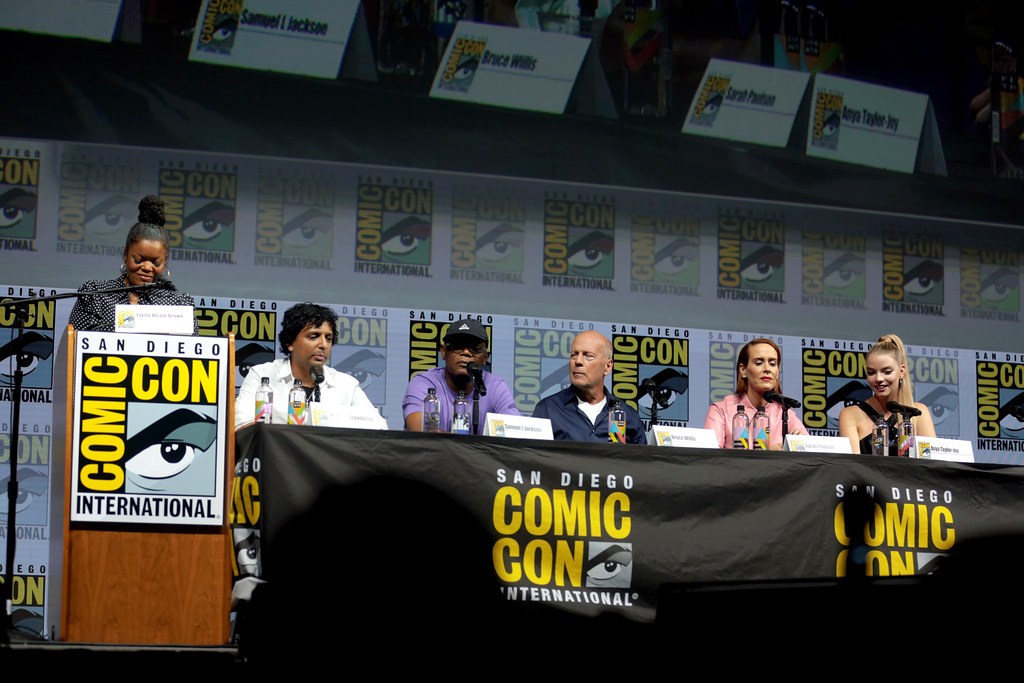
7. **Filming Against All Odds: Production During the COVID-19 Pandemic**The production of ‘Old’ stands as a remarkable feat, as principal photography commenced on September 26, 2020, during the height of the COVID-19 pandemic. This presented unprecedented challenges for M. Night Shyamalan and his team, making it a unique entry in his filmography and a testament to their resilience. It marked the first film of Shyamalan’s career to be shot entirely outside his hometown of Philadelphia, Pennsylvania, taking place instead in the Dominican Republic.
With an $18 million budget, filming took place over three months with cinematographer Michael Gioulakis, using 35mm film to capture the film’s distinctive visual style. Shyamalan ensured stringent safety measures were in place to protect his cast and crew. He personally paid for the production crew’s ten-week stay at a hotel, a significant investment that paid off, as he proudly stated that no one tested positive for the virus throughout the entire shoot.
‘Old’ notably became the first film to be shot during the pandemic in the Dominican Republic, showcasing Shyamalan’s determination to bring his vision to life despite the global crisis. The production concluded on November 15, 2020, a testament to the efficient and careful planning involved. This challenging filming environment undoubtedly added a layer of intensity and isolation that, perhaps inadvertently, mirrored the characters’ plight on the secluded beach, contributing to the film’s claustrophobic atmosphere.
This commitment to safe and continuous production, while delivering a compelling narrative, highlights the dedication of the entire team. It transformed what could have been a debilitating obstacle into an interesting chapter in the film’s journey, proving that compelling cinema can emerge even from the most challenging of circumstances.
Diving even deeper into the chilling world of ‘Old,’ we uncover the layers of M. Night Shyamalan’s vision beyond its shocking premise. The film’s true genius lies not just in what happens, but in how its themes resonate, how its setting amplifies the terror, and the intricate journey it took from concept to screen and into the public consciousness. Prepare to unpack the profound messages and unique production choices that solidified ‘Old’ as a cinematic experience unlike any other.
Read more about: Unpacking M. Night Shyamalan’s ‘Old’: 14 Cinematic Features That Redefine Our Perception of Time
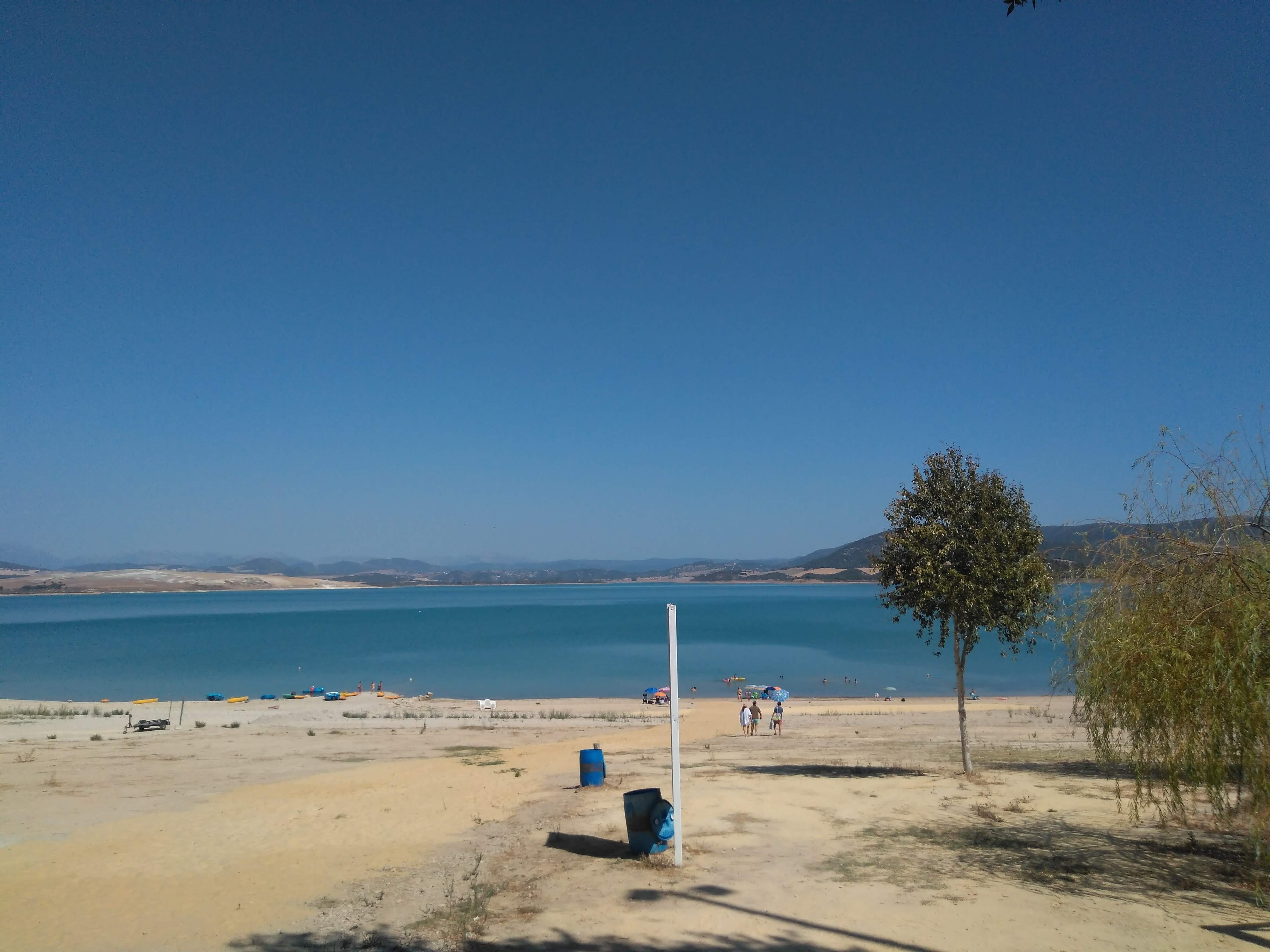
8. **The Secluded Location: A Masterclass in Claustrophobia**The remote, picturesque Playa El Valle beach, nestled between two mountains on the north coast of Santa Bárbara de Samaná in the Dominican Republic, isn’t just a stunning backdrop for ‘Old’; it’s an active, suffocating character in itself. This seemingly idyllic paradise quickly morphs into a cage, heightening the film’s pervasive sense of dread and helplessness. The careful selection of this single, isolated location was paramount to Shyamalan’s vision, mirroring the characters’ inescapable plight.
Shyamalan meticulously crafted this claustrophobic atmosphere through specific filming techniques. He drew inspiration from acclaimed directors like Akira Kurosawa, employing methods seen in films such as ‘Rashomon’ and ‘Ran’. This approach allowed him to create a disorienting and oppressive visual narrative, effectively trapping the audience alongside the characters within the confines of the accelerating beach.
The isolation is not merely physical but psychological. Attempts to leave the beach result in blackouts, with the characters inexplicably returning to their starting point. This repeated, futile struggle against an unseen barrier intensifies their desperation, solidifying the beach as an entity that actively denies them escape, making their accelerated demise all the more terrifyingly inevitable.
This strategic use of a singular, inescapable location transforms what could have been a simple horror scenario into a potent exploration of confinement and the human response to an insurmountable, time-sensitive threat. It becomes a crucible where there is no respite, no external help, only the relentless ticking clock of their own accelerated lives.
9. **Thematic Resonance: Confronting Time, Mortality, and Human Connection**At its core, ‘Old’ is a profound meditation on humanity’s often “dysfunctional relationship to time,” as Shyamalan himself described it to NME. He revealed that the film forces characters to “examine” their relationship with time, particularly when trapped in such an extreme situation. This reflection leads some to find peace amidst the chaos, prompting a deeper inquiry into the nature of acceptance and connection.
Shyamalan’s personal experiences deeply influenced these themes. At the Tribeca Film Festival, he shared how the film’s focus on aging reminded him of watching his own children grow up, and the challenges faced by his father, who has dementia. These deeply personal anchors ground the film’s allegorical horror in tangible, relatable human emotions and experiences.
The cast members also offered their own illuminating interpretations. Nikki Amuka-Bird suggested the film emphasized not taking nature for granted, while Gael García Bernal contemplated how time travels differently for various individuals. Vicky Krieps eloquently summarized it as being “about love and family and all these things that are much stronger than any fears — the fear of aging and the fear of death.” These diverse perspectives underscore the film’s rich thematic tapestry.
Ultimately, ‘Old’ is a stark reminder of the preciousness of every moment, and the vital importance of human bonds in the face of our finite existence. It questions what truly matters when the clock is mercilessly sped up, compelling viewers to reflect on their own lives and relationships.
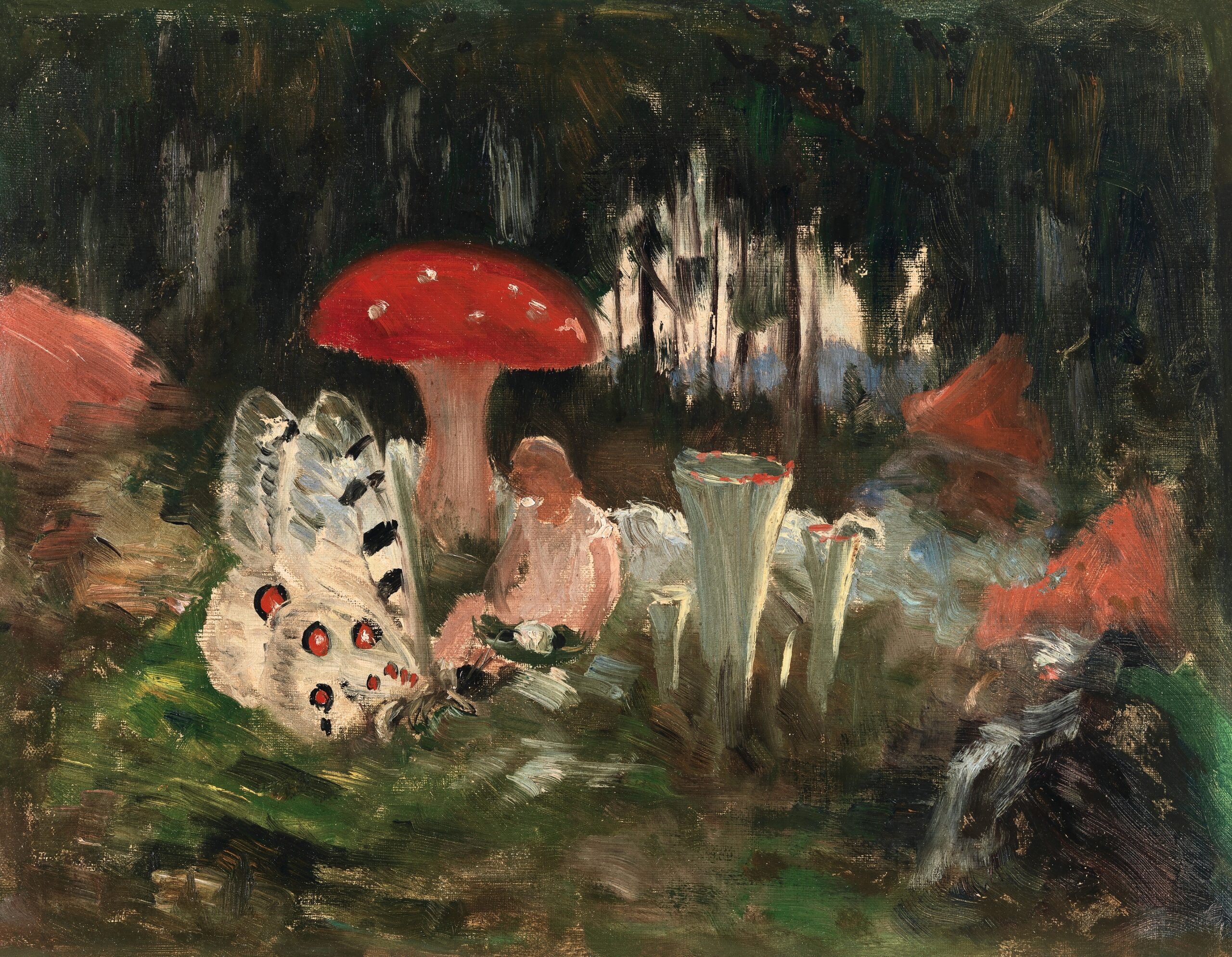
10. **’Old’ in the Age of COVID: An Unintended Allegory for Stalled Time**Remarkably, ‘Old’ found an unexpected, potent resonance with audiences emerging from the global COVID-19 pandemic. Alex Wolff, one of the film’s stars, drew a compelling parallel, stating, “Coming out of COVID, it feels like time just stopped. And that’s what the movie’s literally about.” This sentiment perfectly captured the collective experience of a world where life’s rhythms were disrupted and time seemed to lose its usual flow.
The film’s themes of confinement, accelerated change, and the fragility of life hit different in a post-lockdown world. While unintended, the narrative’s exploration of rapid physical and emotional shifts within a confined space echoed the intense, compressed experiences many faced during isolation, where days blended into weeks, and profound personal changes occurred in a seemingly short span.
Even the production itself was a testament to navigating unprecedented challenges during the pandemic. As detailed in the previous section, the film was shot entirely in the Dominican Republic under strict safety protocols, with Shyamalan personally ensuring no crew member tested positive. This ‘against all odds’ production narrative inadvertently reinforced the film’s themes of resilience and endurance in extraordinary circumstances.
This timely convergence of cinematic themes and real-world experience undoubtedly amplified ‘Old”s impact, transforming it from a mere horror thriller into a poignant, albeit terrifying, allegorical reflection on a shared global trauma. It became more than entertainment; it was a mirror to a generation’s anxieties about lost time and uncertain futures.
11. **Innovative Marketing and a Unique Box Office Journey**’Old’ embarked on a distinctive marketing campaign that aimed to capture attention long before its theatrical release. A 30-second television spot aired during Super Bowl LV on February 7, 2021, generating significant buzz. Anthony D’Alessandro of Deadline Hollywood noted its similarity to a classic ‘Brady Bunch’ episode, while Josh Weiss from Syfy Wire highlighted its “Shyamalan’s signature slow-boil tension.”
Further amplifying its reach, an official trailer and poster were released on May 27, 2021, which Variety’s Antonio Ferme described as delivering “thrills and chills.” Josh Weiss characterized the premise in the trailer as “a reverse Benjamin Button situation that the characters need to reverse before they shrivel up and die,” aptly summarizing the film’s central horror.
The film’s promotional efforts also ventured into innovative digital spaces. A Snapchat aging filter, specifically created for ‘Old,’ garnered an astounding 23 million views worldwide on its first day, with celebrities like Shaquille O’Neal and Charles Barkley using it. This clever use of trending technology helped the film penetrate popular culture beyond traditional cinema audiences.
Despite its unique marketing and a solid opening weekend of $16.85 million, making it Shyamalan’s sixth film to top the box office, ‘Old’ faced a challenging landscape. Michael Cieply’s analysis for Deadline Hollywood, contemplating “screen fatigue” as a cultural phenomenon post-pandemic, offered a broad explanation for audience declines, suggesting a wider weariness of media screens, which impacted the film’s sustained box office performance, ultimately grossing $90.2 million worldwide against an $18 million budget.
Read more about: The Billion-Dollar Echo: How Savvy Brands Are Monetizing Nostalgia to Capture Hearts and Wallets
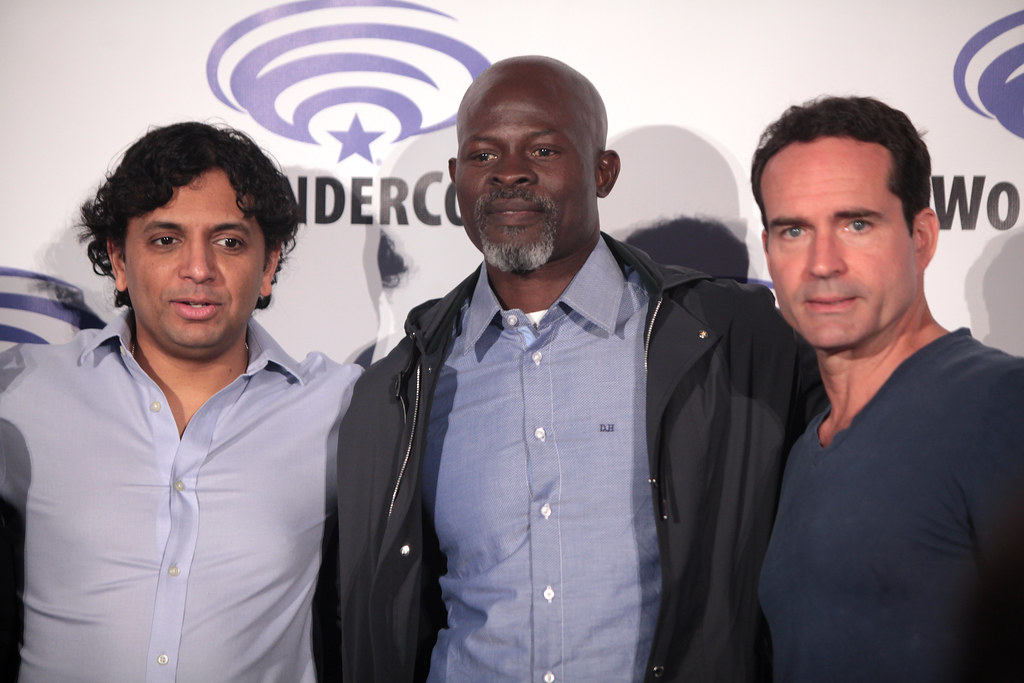
12. **Polarized Reception: The Dialogue, Premise, and Twist Ending**Upon its release, ‘Old’ stirred a considerable debate among critics, resulting in a polarized reception. Review aggregator Rotten Tomatoes reported 50% positive reviews from 344 critics, with an average rating of 5.50/10, noting that “Shyamalan’s uneven execution will intrigue or annoy viewers, with little middle ground between.” Metacritic assigned it a score of 55 out of 100, indicating “mixed or average” reviews.
A significant point of contention was the film’s screenplay and dialogue. Wendy Ide of The Observer found the exposition “ponderous and mannered,” questioning character believability. Alissa Wilkinson from Vox remarked that “Shyamalan has not grown any more skilled at writing dialogue over the years,” though she praised its best moments as comparable to Luis Buñuel’s ‘The Exterminating Angel’. Barry Hertz of The Globe and Mail criticized the “stilted dialogue” and “dumb-dumb plot holes.”
Conversely, the film’s premise and cinematography garnered praise. Jocelyn Novec of the Associated Press, despite general criticism, highlighted its “enticing premise and pretty scenery.” Richard Roeper found the main location “absolutely breathtaking,” and Richard Brody of The New Yorker lauded how “with spare methods and sharp images, the director turns a simple premise into potent fantasy.” Some critics, like Germain Lussier of Gizmodo and Nick Allen of The Playlist, also appreciated its gallows humor and self-aware horror.
The twist ending, a hallmark of Shyamalan’s work, also divided opinions. While the graphic novel ‘Sandcastle’ ends ambiguously, ‘Old’ provides a concrete explanation—a pharmaceutical company conducting human trials. This deviation was met with mixed feelings; Alissa Wilkinson found the graphic novel’s unexplained ending “more satisfying,” and Glenn Kenny of The New York Times, while praising Shyamalan’s fluid filmmaking, felt he didn’t “quite stick the landing” with the ending. Peter Travers, from ABC News, was “shocked” at how clumsily Shyamalan handled potent themes.
Read more about: The Time-Warping Truth: 14 Wild Facts About M. Night Shyamalan’s Thriller ‘Old’ That Left Us Absolutely Stunned!
13. **Shyamalan’s Family Affair: Creative Collaborations Behind the Scenes**’Old’ is not just M. Night Shyamalan’s singular vision; it’s a testament to a unique family collaboration that infused the project with deeply personal touches. The very genesis of the film was a family affair: Shyamalan decided to adapt the graphic novel ‘Sandcastle’ after receiving it as a Father’s Day gift in 2017, collectively presented by his three daughters. This personal connection laid a heartfelt foundation for the chilling narrative.
Beyond inspiring the project, his daughters played active roles in its production. Ishana Shyamalan, his daughter, served as the film’s second unit director. This allowed her to capture crucial footage of the surrounding nature, adding another layer to the film’s visual storytelling and providing a unique insight into the film’s setting and atmosphere. Her involvement speaks volumes about the creative environment within the Shyamalan family.
Furthermore, his other daughter, Saleka Shyamalan, contributed an original song titled “Remain” to the film’s score. Inspired by the profound topic of marriage vows and U2’s iconic “With or Without You,” the song was specifically crafted to “highlight the relationship between Guy and Prisca and the love that exists between them,” reinforcing the emotional core of the film amidst its horror.
These collaborations underscore how ‘Old’ transcended a typical film project, becoming a personal and shared artistic endeavor for the Shyamalan family. Their collective input, from the initial inspiration to active production roles, demonstrably enriched the film’s artistic depth and emotional resonance, making it a truly unique entry in M. Night Shyamalan’s celebrated filmography.
As our journey through the chilling depths of M. Night Shyamalan’s ‘Old’ concludes, it’s clear this isn’t merely a horror film; it’s a profoundly personal, expertly crafted cinematic experience that challenges us to re-evaluate our most fundamental relationship with time itself. From its unique genesis in a graphic novel gifted by his daughters to its meticulous production amidst a global pandemic, ‘Old’ stands as a testament to Shyamalan’s unwavering commitment to original storytelling. It forces us to confront the relentless march of moments, the fragility of our existence, and the enduring power of human connection, even as the sands of time slip away faster than we could ever imagine. This film isn’t just a story about rapid aging; it’s an urgent, unforgettable mirror reflecting our own mortality, leaving an indelible mark long after the credits roll.



